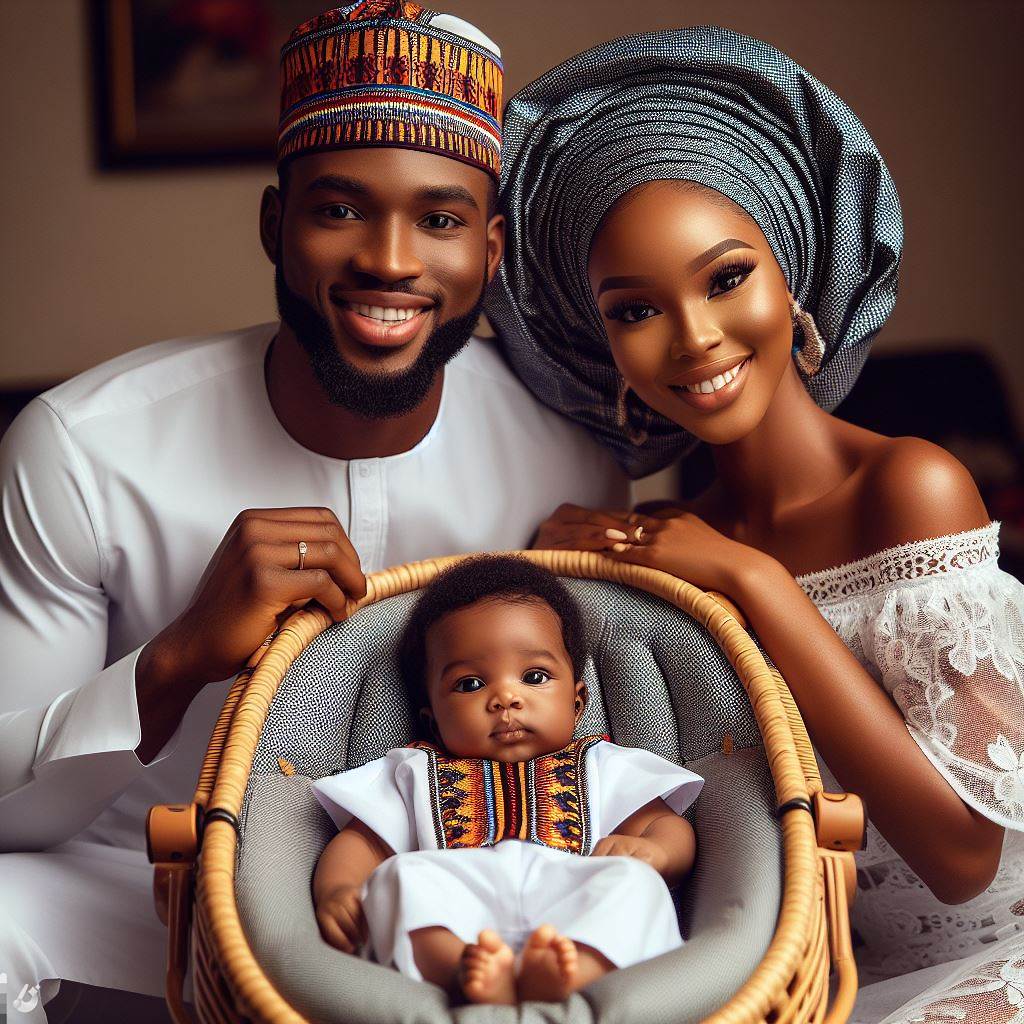Introduction
Choosing the right diaper size is crucial for your baby’s comfort and well-being.
This guide provides an overview of diaper sizing to help you find the perfect fit.
Selecting the correct diaper size is essential in preventing leaks, discomfort, and skin irritations for your little one.
Ill-fitting diapers can cause rashes and make your baby fussy.
Our diaper sizing guide takes into account your baby’s weight, age, and body shape to determine the appropriate diaper size.
We provide a detailed chart for easy reference.
Understanding the weight range for each diaper size is crucial for a snug fit.
Ensure you check the weight guidelines carefully before making a purchase.
Age is also an important factor to consider as babies grow at different rates.
Our guide offers recommended size ranges for each age group to assist you in choosing the right diaper.
Body shape varies among babies, so we offer tips on how to identify if your baby has a narrow waist, chubby thighs, or a long torso.
This will help you find the best-fitting diaper.
Finding the perfect diaper fit has numerous benefits, including minimizing leaks, reducing diaper rash, and enhancing your baby’s overall comfort.
It also ensures ease during diaper changes.
In fact, choosing the right diaper size is crucial for your baby’s well-being.
Parenting Made Just for You
Get personalized Parenting Solutions tailored to your child’s needs. Transform your parenting journey with expert guidance in 1-3 days.
Get StartedOur diaper sizing guide provides valuable information to help you find the perfect fit for your little one, ensuring their comfort and happiness.
Understanding Diaper Sizes
As a parent, ensuring that your little one is comfortable and dry is a top priority.
One key aspect of achieving this is choosing the right diaper size.
In this section, we’ll delve into the intricacies of diaper sizing, helping you navigate through the variety of options available on the market.
Diaper Sizing System
Diaper sizing may seem like a straightforward concept, but understanding the system is crucial for finding the perfect fit for your baby.
Most diapers are labeled with sizes ranging from newborn to toddler.
The sizing is typically based on the weight of the baby, ensuring a snug and secure fit.
It’s important to note that every baby is unique, and factors such as body shape and personal preferences play a role in finding the ideal diaper.
Different Sizes and Weight Ranges
To simplify the process, diaper sizes are generally categorized by weight ranges.
Newborn sizes typically accommodate babies up to 10 pounds, while larger sizes are designed for infants and toddlers up to 35 pounds or more.
Keep in mind that your baby’s weight is the primary factor in determining the right size, but also consider their individual body shape for optimal comfort and leak protection.
Comparison of Diaper Sizes Across Brands
Not all diapers are created equal, and this is particularly evident when comparing sizes across different brands.
Manufacturers may have slight variations in their sizing charts, so it’s advisable to refer to the specific guidelines provided by each brand.
Some brands may run larger or smaller than others, and understanding these differences can save you from trial and error.
Unveil the Perfect Name that Tells Your Family's Story
Let us help you find a name that embodies your family's values, traditions, and dreams. Our personalized consultation weaves cultural insights to create a name that's uniquely yours.
Get StartedTo streamline your diaper selection process, take advantage of online resources and reviews.
Parents often share their experiences with various diaper brands and sizes, offering valuable insights into the best fit for different body types.
In short, mastering the art of diaper sizing involves grasping the sizing system, understanding weight ranges, and recognizing the nuances among brands.
By doing so, you’ll be well-equipped to choose diapers that provide the perfect fit, ensuring your baby stays happy, dry, and comfortable.
Read: How to Pick the Right Baby High Chair
Signs of a Poor Fit: Ensuring Comfort and Dryness for Your Baby
Finding the perfect diaper size for your baby is crucial to their comfort and well-being.
In this section, we’ll explore the signs of a poor fit, understand major indicators, common issues, and emphasize the importance of avoiding discomfort and leaks.
Major Indicators of an Ill-Fitting Diaper
- Red Marks or Indentations: Check your baby’s skin for red marks or indentations along the waistband or leg openings. These signs indicate that the diaper is too tight and might be causing discomfort.
- Frequent Leaks: If you notice that your baby’s diaper is leaking more often than usual, it may be a sign that the diaper is not the right size. Leaks can occur if the diaper is too small and doesn’t provide adequate coverage.
- Excessive Sagging: On the flip side, if the diaper is too large, you might notice excessive sagging. This not only compromises the effectiveness of the diaper but can also lead to discomfort for your little one.
Common Issues Caused by the Wrong Size
- Skin Irritation: Ill-fitting diapers can cause chafing and skin irritation, leading to discomfort for your baby. Pay attention to any redness, rashes, or marks on your baby’s delicate skin.
- Disrupted Sleep: Babies need uninterrupted sleep for healthy development. A diaper that doesn’t fit well can lead to discomfort, causing your baby to wake up more frequently during the night.
- Ineffectiveness in Absorption: The wrong-sized diaper may not effectively absorb moisture, resulting in wetness against your baby’s skin. This not only causes discomfort but also increases the risk of skin issues.
Importance of Avoiding Discomfort and Leaks
Ensuring that your baby wears the right-sized diaper is essential for their overall comfort and well-being.
A well-fitted diaper reduces the risk of leaks, keeps your baby’s skin dry, and prevents potential health issues associated with prolonged exposure to moisture.
Remember, every baby is unique, and their diapering needs may change as they grow.
Regularly check for signs of a poor fit and adjust diaper sizes accordingly to provide the best possible care for your little one.
A comfortable, well-fitted diaper contributes to a happier and healthier baby.
Read: How to Avoid Diaper Rash: Tips for Nigerian Parents
Choosing the Right Size
When it comes to keeping your little one comfortable and dry, choosing the right diaper size is crucial.
Here’s a comprehensive guide to help you find the perfect fit for your baby.
Tips for Measuring Baby’s Weight Accurately
Before diving into diaper sizes, ensure you have an accurate measurement of your baby’s weight.
Use a reliable baby scale or consult your pediatrician for the most precise weight information.
It’s essential to update this measurement regularly as your baby grows.
Checking the Diaper Size Chart
Online Resources and Brand-Specific Charts
Many diaper brands provide size charts to assist parents in selecting the right fit for their babies.
These charts typically correlate weight ranges with diaper sizes.
Utilize online resources, including the brand’s official website, to access and download these charts.
Keep in mind that different brands may have slightly different size classifications, so refer to the specific chart for the diapers you’re using.
Considering Baby’s Age, Body Shape, and Mobility
Beyond weight, factors like age, body shape, and mobility play a role in determining the ideal diaper size:
- Age: As babies grow, their needs change. Younger babies may require smaller sizes, while older, more active ones might benefit from larger diapers that offer more flexibility.
- Body Shape: Consider your baby’s unique body shape. Some babies may have fuller bottoms, while others have slender waists. Choose a diaper that accommodates your baby’s shape to prevent leaks and ensure a snug fit.
- Mobility: If your baby is crawling or walking, opt for diapers that provide ample flexibility. Stretchy sides can ensure a secure fit without restricting your little one’s movement.
In review, finding the perfect diaper size involves a combination of accurate weight measurement, referring to size charts, and considering your baby’s age, body shape, and mobility.
By taking these factors into account, you’ll be well on your way to keeping your baby comfortable and happy in the right-sized diapers.
Read: Innovative Baby Gear for Nigerian Parents
Testing the Fit
Ensuring your baby’s diaper fits perfectly is crucial for both their comfort and overall protection against leaks.
Follow these step-by-step instructions to make sure you’ve got the right fit:
Step-by-Step Instructions for Checking the Fit
- Front Alignment: Lay your baby down on a changing surface and unfold the diaper. Ensure the front of the diaper is aligned with your baby’s belly button.
- Leg Placement: Gently lift your baby’s legs and guide them into the leg openings. The leg cuffs should be snug but not too tight to avoid red marks.
- Secure Tabs: Fasten the diaper tabs evenly on each side. The tabs should be snug but allow for a finger’s width of space to prevent discomfort.
- Waist Fit: Check the waistband to ensure it sits comfortably below your baby’s belly without being too tight. You should be able to slide two fingers between the diaper and your baby’s skin.
- Rear Adjustments: Make sure the back of the diaper is high enough to cover your baby’s bottom entirely. This prevents leaks, especially during nighttime use.
Ensuring Proper Leg and Waist Seal
- Leg Cuff Check: Run your fingers around the leg cuffs, ensuring they form a gentle seal without being too tight. This prevents leaks without compromising your baby’s comfort.
- Waistband Seal: Confirm that the waistband sits at the waistline without rolling down. A secure waistband prevents leaks and ensures the diaper stays in place during your baby’s movements.
Assessing Comfort and Flexibility
- Comfort Test: Pay attention to your baby’s comfort level. If they seem irritable or experience red marks, reevaluate the fit. A comfortable diaper allows for unrestricted movement.
- Flexibility Check: Encourage your baby to move their legs freely. The diaper should flex with their movements without sagging or causing discomfort.
Regularly reassessing the fit ensures your baby’s comfort and protects against leaks.
Remember that as your baby grows, their diaper needs may change, so be attentive to any signs that it’s time to adjust the sizing for the perfect fit.
A well-fitted diaper contributes to a happy, dry, and content baby!
Read: Eco-Friendly Baby Gear Choices in Nigeria

Factors to Consider
Choosing the right diaper size for your baby goes beyond just the age and weight recommendations.
To ensure the perfect fit and ultimate comfort, consider these key factors:
Absorbency Needs
Understanding your baby’s absorbency requirements is crucial for a leak-free and comfortable diapering experience.
Babies have different urination patterns, and some may require a higher level of absorbency.
If your little one tends to have heavier wettings, opting for diapers with enhanced absorbency features, such as multiple layers or gel technology, can provide the extra protection needed.
Pay attention to the diaper’s capacity to keep your baby dry and comfortable for extended periods.
Sensitivity to Materials
Babies, especially those with sensitive skin, may react differently to various diaper materials.
Some diapers come with hypoallergenic features and are free from fragrances, lotions, and harsh chemicals that could potentially cause irritation.
If your baby has a history of skin sensitivity, opt for diapers made from gentle, breathable materials.
Additionally, consider trying out a small pack of diapers before committing to a larger quantity to ensure your baby’s comfort and avoid potential skin issues.
Overnight Usage and Extended Wear
For parents seeking a diaper that can handle overnight usage or extended wear, it’s essential to look for specific features that cater to these needs.
Overnight diapers are designed with enhanced absorbency to withstand longer hours without leaks.
These diapers often have a higher capacity to handle multiple wettings, ensuring your baby stays dry throughout the night.
If you anticipate extended wear, such as during long trips or outings, selecting a diaper designed for extended use can provide the peace of mind that your baby will remain comfortable and dry.
Basically, finding the perfect diaper fit involves considering your baby’s unique needs.
By evaluating absorbency requirements, sensitivity to materials, and the demands of overnight or extended wear, you can select a diaper that not only fits well but also keeps your baby happy and content throughout the day and night.
Troubleshooting Common Issues
Ensuring the perfect fit for your baby’s diaper is crucial for both their comfort and your peace of mind.
In this section, we’ll explore common sizing issues and how to troubleshoot them effectively.
If the Diaper is Too Small
Choosing the right diaper size is essential for your baby’s comfort and to prevent any unwanted leaks or discomfort.
If you notice that the diaper is too small, here are some troubleshooting tips:
- Check the Size Guide: Review the diaper size guide provided by the manufacturer. Ensure you are using the correct size based on your baby’s weight and age.
- Try a Larger Size: If your baby is at the upper end of the weight range for the current size, consider moving up to the next size. A snug fit is good, but if the diaper is leaving marks on your baby’s skin or causing redness, it’s time for a size upgrade.
- Adjust the Tabs: Ensure that you are fastening the diaper snugly but not too tight. You should be able to fit two fingers comfortably between the diaper and your baby’s skin.
If the Diaper is Too Big
An oversized diaper can lead to leaks and discomfort. Here’s what to do if you find the diaper is too big:
- Check the Size Guide: Similar to a small diaper, refer to the size guide and make sure you are using the correct size. If your baby hasn’t reached the minimum weight for the size, consider using a smaller size.
- Secure Tabs Properly: Double-check that you are fastening the tabs securely. If the diaper is not snug around your baby’s waist, it may be prone to leaks.
- Consider a Different Brand: Diaper sizing can vary between brands. If one brand’s sizing isn’t working for your baby, try another brand that may offer a better fit.
Dealing with Leaks and Blowouts
- Check the Fit: Ensure the diaper is snug but not too tight. Pay attention to the leg cuffs to prevent leaks.
- Change Regularly: Frequent diaper changes are key to preventing leaks. Change your baby’s diaper promptly when wet or soiled.
- Upgrade Absorbency: If leaks persist, consider using a diaper with higher absorbency, especially during nighttime.
By troubleshooting these common sizing issues, you’ll be on your way to finding the perfect fit for your baby, promoting comfort, and minimizing leaks or blowouts.
Always remember to check the size guide and be attentive to your baby’s needs as they grow.
Transitioning to a New Size
As your little one grows, so does the need for a diaper size upgrade.
Recognizing the signs and smoothly transitioning to the next size is crucial for your baby’s comfort and your peace of mind.
Recognizing the Need for a Size Change
Paying attention to subtle cues from your baby can be the key to determining when it’s time for a diaper size switch.
If you notice red marks on their thighs or waist, or if the diaper feels excessively snug, it may be an indication that it’s time for a larger size.
Additionally, frequent leaks or blowouts could signify that the current size is no longer providing adequate coverage.
Adjusting Gradually or All at Once
When transitioning to a new diaper size, parents often wonder whether it’s best to make the switch gradually or all at once.
The decision may depend on your baby’s comfort level and how close they are to the weight limits of the current size.
Some parents find success by gradually incorporating the new size during certain diaper changes, allowing their baby to adjust at their own pace.
Others may opt for an immediate switch if their baby is consistently reaching the weight limit of the current size.
Additional Tips for a Smooth Transition
- Monitor Weight Changes: Keep an eye on your baby’s weight to ensure that they are within the recommended range for the new diaper size.
- Trial Runs: Before fully committing to the new size, consider using one or two diapers as a trial to assess how well they fit and how your baby responds.
- Check for Red Marks: After a diaper change, inspect your baby’s skin for any red marks or irritation, which could indicate an improper fit.
- Adjust Fastening Tabs: Ensure that the fastening tabs are secure but not too tight. A snug fit is essential for leak prevention without causing discomfort.
Remember, every baby is unique, and finding the perfect diaper fit might take a bit of trial and error.
By paying attention to your baby’s signals and following these tips, you can make the transition to a new diaper size a seamless and comfortable experience for both you and your little one.
Frequently Asked Questions (FAQs)
Can I rely solely on baby’s weight?
One of the most common queries parents have when choosing diapers is whether they can solely rely on their baby’s weight for sizing.
While weight is a crucial factor, it’s not the only consideration.
Babies come in all shapes and sizes, and factors like body shape and individual comfort play a significant role.
It’s recommended to use weight as a starting point, but also pay attention to the fit around the legs and waist.
If the diaper is too tight or too loose in these areas, it can lead to leaks or discomfort for your little one.
What if my baby is between sizes?
Babies grow rapidly, and it’s not uncommon for them to fall in between two diaper sizes.
In such cases, it’s advisable to consider both the weight and the age of your baby.
If your little one is at the higher end of the weight range for a size but hasn’t reached the recommended age, it might be worth trying the larger size.
Conversely, if your baby is within the weight range but on the younger side, the smaller size might provide a better fit.
Remember, a well-fitted diaper is crucial for preventing leaks and ensuring your baby’s comfort.
How often should I check for size changes?
Babies grow at different rates, and what fits perfectly one month might be snug the next.
As a general rule, it’s recommended to check your baby’s diaper fit regularly, especially during growth spurts.
Keep an eye on signs such as red marks on the skin, frequent leaks, or difficulty fastening the tabs.
If you notice any of these indicators, it may be time to reassess the size.
Checking for size changes every few weeks during the first year is a good practice, ensuring that your baby is always in the right-sized diaper for optimal comfort and protection.
Essentially, while weight is a critical factor in choosing the right diaper size, it’s essential to consider other aspects like fit around the legs and waist.
Be attentive to your baby’s comfort and check for size changes regularly to accommodate their growing needs.
Conclusion
Finding the perfect fit for your baby’s diaper is crucial for their comfort and well-being.
It ensures that they are protected from leaks and irritation.
In this guide, we have discussed the importance of choosing the right diaper size.
We have highlighted key points such as checking weight and age guidelines, monitoring diaper performance, and considering your baby’s body shape.
We encourage parents to prioritize their baby’s comfort and well-being by investing in diapers that fit properly.
It may take some trial and error, but finding the perfect fit is worth the effort.
Remember, a well-fitting diaper will prevent leaks, reduce the risk of diaper rash, and keep your baby happy.
When they are comfortable, they can play, explore, and grow without any discomfort or distractions.
So, take the time to assess your baby’s current diaper size and make necessary adjustments as they grow.
Regularly check for signs of discomfort or poor fit, such as red marks on their skin or frequent leaks.
By prioritizing your baby’s well-being and comfort, you are creating a positive and nurturing environment for them to thrive in.
Trust your instincts and choose the best diaper size for your little one!




